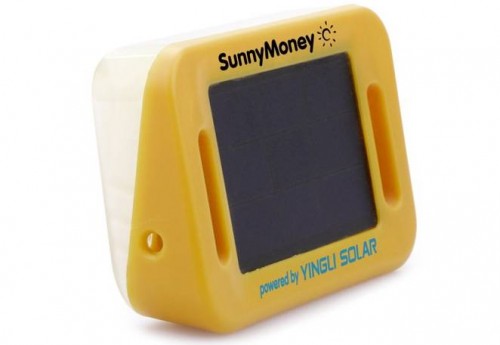RECOMMENDED VIDEOS

Greenhouse Cooling & Ventilation By Rimol Greenhouse…
Rimol Greenhouse Systems, Inc

Fronius Energy Package - The personal storage solution…
Fronius International GmbH

Energy Efficiency Services -- Motiva Services Ltd
Motiva Services Ltd

First Solar Malaysia : Black Series Module - Cad-Tel Thinfilm…
First Solar Malaysia Sdn Bhd

EPC contractor & IPP in power plant design & construction
TELEMENIA LTD
Related Stories
The largest solar farm apiary in the US opens this week
The City of London will be powered with 100% renewable energy by October 2018
New study suggests that plastic waste may be transformed into usable energy
Uravu’s zero-electricity Aqua Panels produce gallons of water from thin air
104% of Portugal’s electricity consumption in March came from renewable energy
07 Nov, 2016

At just $5, this solar lamp is the most affordable in the world
Renewable Energy & Energy Efficiency | GERMANY | 07 Nov, 2016
Published by : Eco Media Asia
When is the last time that a $5 gadget literally changed your life? OK, other than the banana slicer, that is...
Most, if not all, of us have ready access to lighting anytime we need it, for as long as we need it, wherever we need it, thanks to a reliable electricity grid and lighting infrastructure in our homes and businesses, along with relatively affordable batteries and battery chargers for flashlights and other portable lighting solutions. But there are still millions of people on the planet for whom basic clean lighting is a luxury, with the only other alternatives being kerosene, candles, or fire, all of which come at a cost, both in terms of money and in air quality, and to whom a clean reliable way to light up a room can make all the difference.
Solar lights can be that clean illumination source in the developing world, and we've seen a number of different designs being touted as the answer to some of the issues of energy poverty around the world, with a small solar panel and a battery and LED bulb supplying several years' worth of clean light. Designing for the off-grid developing world presents a lot of challenges, including the need for rugged and reliable construction that can stand up to the wear and tear of daily use in harsh environmental conditions, but one of the standard criteria is also to have an affordable price to the end user. It's one thing to build a solar light meant for weekend camping or emergency supplies, with all the bells and whistles included, and to sell it to people who can easily afford what the modern western market will bear, and another thing entirely to build a quality solar light meant to be used day in and day out, from durable materials, at a cost affordable to families who earn US$1.25 or less per day.
Earlier this month, Yingli Europe, a subsidiary of Yingli Solar, announced that through a partnership with an international charity that combats poverty and climate change, SolarAid, it has developed "the world's most affordable quality solar light," which has an end cost to buyers in Africa of just $5. The SM100 retails for £10 in the UK, where sales of the solar light will help to underwrite the distribution of two more SM100 lights in Africa for each one sold in the UK.
"When I first started at SolarAid 10 years ago the lights we sold in Africa were $25 each. Over the last 10 years prices have come down and now SolarAid is proud to be launching what we believe is the world's most affordable solar light on the market. Working with our social enterprise, SunnyMoney, in Africa we will be selling the SM100 to people in rural communities for just $5 each. We sincerely hope this step change in pricing will help us to eradicate the kerosene lamp for good." - Nik Sireau, CEO of SolarAid
According to SolarAid, some 9,000 SM100 lights were distributed in Uganda, Malawi, and Zambia in August 2016, through the social enterprise arm of SolarAid, SunnyMoney, which sells the solar lights through school networks and local businesses. This first wave of SM100 lights will be a "sales trial" that will help the solar charity get feedback from customers in order to optimize and/or change the design for further production of the units.
The SM100 solar light, which was developed specifically for SolarAid by Yingli Solar for off-grid families and school children, can provide more than 5 hours of bright light per day, and can be used on a stand or hung from the wall when in use. The lamp also includes slots for a strap, so that the light could be worn as a head lamp for hands-free tasks or used as a handheld light.
What's the big deal about 5 hours of solar lighting each day? Well, when you factor in the reduced risk of eye ailments and respiratory illness from kerosene lamps (which lead to the deaths of some four million people each year), and then add in the extra income (and study time) from an extension of the hours of productivity, and the added community benefits of clean lighting, along with a number of other indirect benefits, it can end up being a key tool for reducing poverty. Learn more about how you can help fund solar lights for the developing world at SolarAid.
